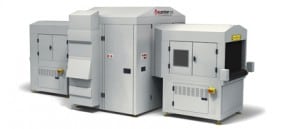
Taking advantage of the longer than expected life-cycles of the Explosive Detection Systems (EDS) it has deployed the past decade, the Transportation Security Administration (TSA) will continue to focus on upgrading legacy systems rather than recapitalizing with new deployments, according to the official in charge of checked baggage technology for the agency. As long as the existing machines are able to detect the required threats, budget constraints will “limit the number” of recapitalization projects in the coming years, Mario Wilson,…

 By
By 











